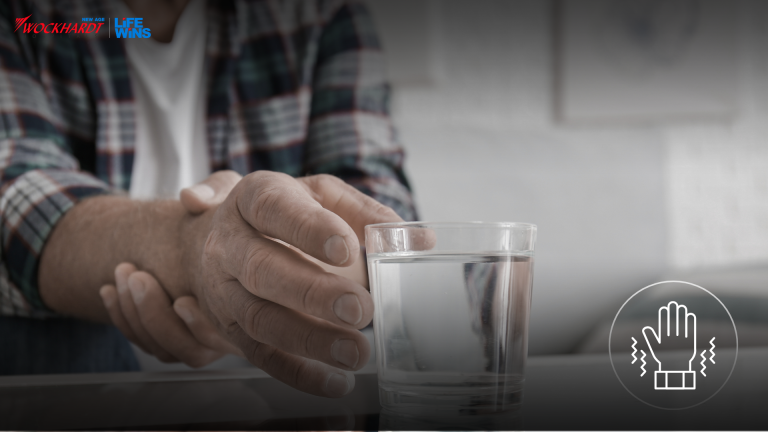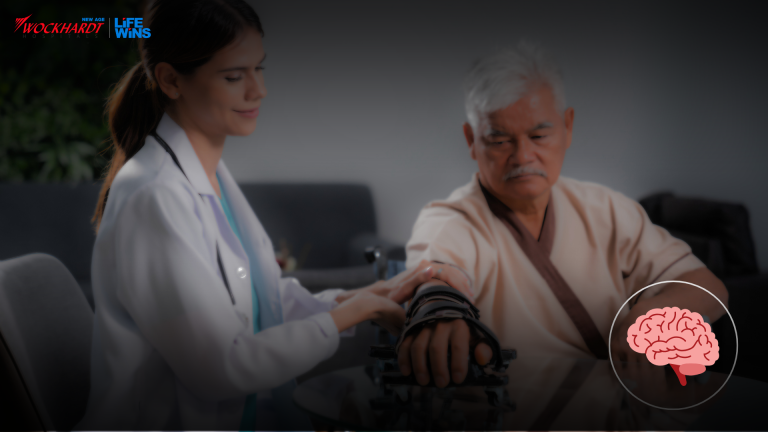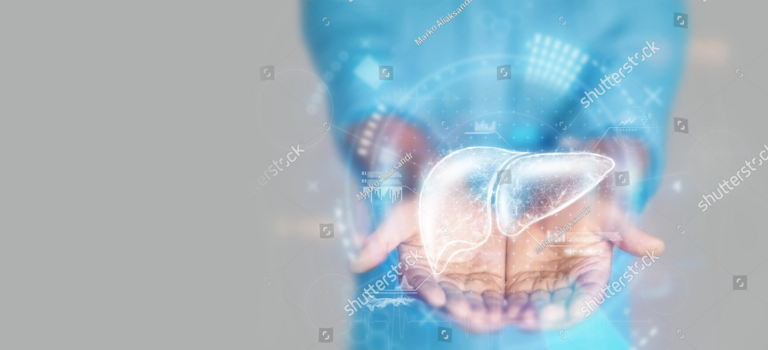Wockhardt Hospitals, Nagpur celebrate World Physiotherapy Day

On the occasion of World Physiotherapy Day, the Department of Physiotherapy organized a camp in an old age home and nearby police station to address their aches and pains. This year the theme for world physiotherapy Day is ‘Treatment of Osteoarthritis. The Physiotherapy team led by Dr. Alka Nakade, Head of the Department guided the police station staff on keeping their joints healthy through regular exercises and if any one of them had any osteoarthritis symptoms they were given the exercise regimen. “We had also visited vrudhasharam where we met almost 20 to 25 old people, talking to them and knowing their problems and explaining the exercises to every individual according to their complaints. We have also arranged a free foot analysis machine on 8th Sep in the hospital for all the pts and relatives to check their wt bearing status which if improper leads to OA knees”, informed Dr. Alka. The hospital will also set up a foot analysis machine on its premises on 8th September 2022 which can be accessed by the patients and relatives free of any cost. “Our aim is to be able to contribute to society to prevent diseases while we do our best in treating our patients. This exercise is just a small step in this direction”, said Mr. Abhinandan Dastenavar, Centre Head, Wockhardt Hospitals in Nagpur. Dr. Alka NakadeHead of the Department – PhysiotherapyWockhardt Hospitals, Nagpur To book an appointment call: +918605604444 Source: https://ournagpur.com/wockhardt-hospitals-nagpur-celebrate-world-physiotherapy-day/
Bharti Singh Talks About Planning a Second Baby Post Cesarean

In an interview, Bharti Singh spoke about wanting a sibling for her son. However, her pregnancy plans might have to wait as she had her son via C-section delivery due to which she cannot get pregnant before a year or two. Indian comedian Bharti Singh is an inspiration for all the new moms – especially the working mothers who juggle between work and family life and motherhood all the same time. Despite her professional duties, she is often seen spending quality time with her son Laksh who was born in April this year. And only a few days after her delivery, Singh was back at the sets to resume work. Recently, she opened up about her plans for a second pregnancy in interaction with ETimes. In an interview, Bharti Singh spoke about wanting a sibling for her son. However, her pregnancy plans might have to wait as she had her son via C-section delivery due to which she cannot get pregnant before a year or two. Cesarean section or C-section delivery is a surgical procedure wherein an incision is created in the belly and uterus. While this procedure has evolved over the years, there are some complications that may follow. Dr. Indrani Salunkhe, Consultant Gynaecologist at Wockhardt Hospitals, spoke about the procedure and started by talking about how the procedure evolved over the years. “Cesarean section is a surgery in which your baby is born through a cut that your doctor makes in the belly and uterus. The procedure has evolved over the years since earlier doctors took a vertical scar on the abdomen which took longer to heal and was not cosmetic. At present, doctors create a transverse scar during the procedure which is cosmetic and has a faster recovery time,” said Dr. Salunkhe. “Doctors make 2 types of scars on the uterus during a C-section. The transverse incision which is the most common one goes from side to side while the vertical one goes from top to bottom. If the previous scar is vertical u cannot attempt a normal delivery since the chances of scar rupture are high. If your cesarean scar is transverse you will be allowed for a vaginal delivery. There is a small risk of uterine rupture for a woman who attempts VBAC even if a woman has a transverse scar. Therefore, it is advised to always discuss the pros and cons of the same with your doctor,” the expert added. Advantages of Vaginal Birth After Previous Cesarean Section: Dr. Indrani SalunkheConsultant GynaecologistWockhardt Hospitals, Mumbai Central To book an appointment call: 022-61784400 Source: https://www.timesnownews.com/health/bharti-singh-talks-about-planning-a-second-baby-post-caesarean-know-the-long-term-implications-of-the-procedure-article-93984603
How much protein, iron-calcium does the body need daily? Know expert opinion

The dietary requirements of women are different from those of men. Yes, you read it right. Men require more calories and protein than women. Therefore, experts are giving advice on what nutritional components are necessary to include in a regular diet for men and women. When it comes to health, it should not be taken lightly. So you can take the help of a nutritionist and follow a balanced diet. Nutrition plays an important role in both men and women. Good food helps reduce the risk of diseases, allergies, and infections and improves metabolism. Good nutrition can help you boost immunity and maintain optimum weight. However, most men and women are confused when it comes to following the right kind of nutrition. There are many doubts regarding nutrition. It is very important to clear all the misconceptions related to this. Riya Desai, Senior Dietitian at Wockhardt Hospitals, Mumbai Telling you what kind of food you should take to stay healthy. Men need more calories Men have more muscles than women. It is a known fact that maintaining muscle mass requires more calories. Therefore, men require more calories than women. In addition to differences in body type and body composition, the calories required by a person also depend on their height and current body weight, and the type of lifestyle the individual has. For example, a man doing a desk job needs fewer calories. So, even though we say that men require more calories, other factors are also taken into account and the calorie intake always varies. That’s why you need to take the advice of an expert. Women need more calcium It is important to have more calcium in the body of women because calcium helps to make bones and teeth strong. Women are more prone to osteoporosis than men because calcium and estrogen levels in the body decrease after menopause. To reduce the chance of bone fractures, women need calcium and vitamin D. Consume more low-fat milk and milk products, dark green leafy vegetables like nachni, rajgira, spinach, kale, beetroot, broccoli, tofu, soybean, and its by-products. Eat foods rich in vitamin D such as soy milk, mushrooms, fatty fish, fortified cereals, oils, and eggs. Women need more iron Women are more prone to anemia due to iron deficiency. A major factor influencing iron status is menstruation. As women menstruate, they become deficient in iron and are more prone to anemia if women do not pay attention to their diet. The deficiency of iron in the body can cause cramps, fatigue, inability to concentrate, and difficulty in breathing in women. What is iron found in Women should include beans, peas, and lentils, sprouts, and pulses, dry fruits like raisins and dates, dark green leafy vegetables like spinach, mint, fresh coriander, cauliflower greens, and vegetables like pumpkin, sesame, and nuts in their regular diet. Due to this, the body gets more amount of iron. Men need more protein Calorie and protein requirements vary from person to person. Therefore, men should consult an expert about the right amount of protein. Women should also ask the specialist and take it only after that. Excess protein puts an extra load on the kidney. Therefore, take expert advice before consuming protein in excess. Disclaimer: This article is for general information only. It cannot in any way be a substitute for any medicine or treatment. Always contact your doctor for more details. Riya DesaiSenior DietitianWockhardt Hospital, Mumbai To book an appointment call: +918291101001 Source: https://www.newsdayexpress.com/lifestyle/health/how-much-protein-iron-calcium-does-the-body-need-daily-know-expert-opinion/
Wockhardt Patient Education Initiative: Let’s Know More About ITP

Under the Patient Education Initiative of Wockhardt Hospitals in Nagpur, Dr. Gunjan Loney, Consultant – Hematologist and Hemato – Oncologist. What is ITP? Immune thrombocytopenia (formerly known as idiopathic thrombocytopenic purpura) is a medical term for an autoimmune disorder causing a shortage of platelets and bruising. Causes: The immune system mistakes the platelets as foreign and destroys them. It can follow a virus, vaccination, or certain medications, but for most people the cause is unknown. Three Types of ITP Acute ITP – that arises suddenly Persistent ITP– if the platelet count remains low after 3 months Chronic ITP– if the platelet count has not returned to normal after 12 months. What are Platelets? There are three types of blood cells that are all formed in the bone marrow; red cells, white cells, and platelets. Platelets, which are small and sticky and circulate in the bloodstream, provide the initial plug to stop bruising and bleeding after an injury. The normal platelet count is between 150 to 400 (x 109/l). Many people with ITP have a platelet count in single figures. The number of platelets circulating in our bodies fluctuates all the time, and thus no two consecutive platelet counts are likely to be exactly the same either in a healthy person or in an ITP sufferer. Symptoms of ITP Some people with ITP, especially those with a count over 50, may have no symptoms at all, and their ITP is only noticed during a routine blood test. Even people with very low counts can sometimes have few symptoms. Common symptoms are: When to Seek Help? You should contact the hospital in the following circumstances: A prolonged (over 30 minutes) nosebleed which will not stop despite pinching the noseProlonged gum bleeding blood in the feces or urine, heavy blow to the head persistent or severe headache with loss of vision, vomiting or drowsinessVery heavy periods (eg. lasting 8 -10 days, changing more than 4-5 pads per day, passing clots on 2 consecutive days) Diagnosis: ITP is usually diagnosed by a blood test showing that only the platelet count is low, and the red blood cells and white blood cells all look normal. Additional blood tests may be taken at this time to exclude rare clotting or immune diseases that can mimic ITP. A bone marrow study may be done if the ITP continues, in which a small sample of bone marrow will be taken under local anesthetic and examined under the microscope. Dr. Gunjan LoneyConsultant Hematologist and Hemato – OncologistWockhardt Hospitals, Nagpur To book an appointment call: 0712-6624100 Source: https://thelivenagpur.com/2022/08/30/wockhardt-patient-education-initiative-lets-know-more-about-itp/
Avascular Necrosis of the Femoral Head (AVN) Among Youngsters
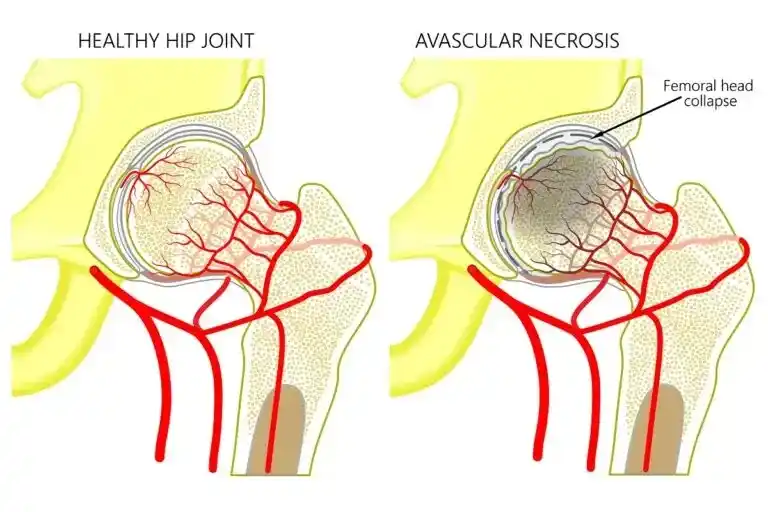
Prior to 2020 had 1 or 2 cases visiting hospital OPD in a span of 6 months and now it is 12 in just four months. Nashik: Just like heart and spine problems, there is a significant rise in the cases of Avascular Necrosis of the head femur in the younger population. Avascular Necrosis is a disease that leads to temporary or permanent loss of blood supply to the bones. Doctors have noticed an increased number of patients coming with complaints of AVN disease in their OPD. AVN i.e Avascular Necrosis of the head of the femur is a disease of the hip joint which has recently been found rapidly increase incidence in the Covid pandemic, particularly in the younger population. “Prior to 2020, AVN, a disease of young (20-40) had 1 to 2 cases visiting hospital OPD in a period of 6 months. From April 2022 to August 2022, (4 months period), a total number of 12 patients were diagnosed to have Avascular Necrosis of the head of the femur. This suddenly increased incidence of AVN in pandemic may be related to Covid-19 virus or coagulopathy that follows after its infection,” said Dr. Pankaj Gunjal, Consultant Orthopaedic, Wockhardt Hospitals, Nashik. Dr. Gunjal added, “Prior to 2020, AVN of the head femur was found in the young population, but it was not very common. Most of the time its causes were not identifiable, but certain diseases like sickle cell anemia, smoking, alcoholism, unmonitored, and long-term use of steroids were associated with AVN. After 2020, there was a sudden increase in patients with hip pain, and on the investigation, they are diagnosed with AVN of the head of the femur. From April 2022- August 2022, 12 patients were diagnosed with AVN of the head of the femur. Mostly, young patients came with back pain radiating to the lower limb. On careful examination, it is found that the pain they are complaining about is not from the back but from hip joints. Pain from the back usually radiates to the back of the lower limbs and can be felt till the foot while pain originating in the hip is felt on the front side of the thigh and radiates to the knee. Most patients are in the age group of 20-40, and males are more commonly affected. One particular complaint common in patients is pain while sitting on a bike in the initial stages of the disease.” Four Stages of AVN (Avascular Necrosis) AVN has 4 stages, in stage 1- mild pain is felt no changes are seen on X-ray, and MRI may show bone edema. In this stage, the blood supply to the head of the femur is stopped to a particular area and that area is necrosed (dead).” As the disease progresses in stage II, severe pain is felt, still, no changes are seen on the x-ray, MRI shows necrosis of part of the head of the femur with bone edema. In this stage due to the absence of blood supply, the particular part of the head of the femur has necrosed bone. The body makes an attempt to heal that area, and edema i.e inflammatory fluid increases in the head of the femur, which leads to severe pain in the hip joint. In stage 3, as the disease progresses, due to dead bone, the covering surface of the head collapses, there is severe pain and the patient feels pain in day-to-day activities and is unable to sit crossed-leg or squat. In stage 4, the irregular-shaped head has friction with its cup (acetabulum) and results in arthritis (wear and tear of joint) of the hip joints leading to decrease activities of patients due to severe pain,” highlighted Dr. Gunjal. Timely treatment of AVN is the need of the hour. “Many patients don’t visit the hospital when the pain is mild and may take painkillers. In stage 2, pain is severe and a simple procedure that is core decompression can be done to reduce pain and avoid further damage to the joint, and delay arthritis. It is found that those diagnosed early with less than 30% of involvement of the head of the femur find greater benefits with this procedure. In stage 3/ 4, total hip replacement (THR) is the only option for complete relief from pain. In this operation, the joint is replaced by implants. Even lifestyle changes such as diet to reduce weight and exercises to strengthen the muscles around hip and core muscles should be done on a regular basis,” concluded Dr. Gunjal. Dr. Pankaj GunjalConsultant: Joint Replacement & Orthopaedic SurgeriesWockhardt Hospitals, Nashik To book an appointment call: +918669998260 FAQs on AVN Among Youngsters Q. What is the average age of AVN patients? Ischemia that develops on a non-traumatic or traumatic background might result in AVN. Those between the ages of 20 and 40, who are physically active are usually the ones affected. Patients with avascular necrosis (AVN) typically fall within the age range of 30 to 50. However, the specific age may vary depending on the underlying cause and the joints affected. Younger individuals are equally susceptible to AVN, particularly if they have medical issues, use steroids, have experienced trauma, or possess other risk factors. Q. What causes AVN in youngsters? Children suffering from injuries, such as fractures or dislocations that cause poor blood supply to the affected bone can develop avascular necrosis (AVN). In addition, this condition can be worsened by certain diseases, such as leukemia, sickle cell disease and systemic lupus erythematosus, which impair the blood supply to the bones and therefore make young people more vulnerable to AVN. The use of corticosteroids over a long period of time by younger people can also make them more vulnerable to AVN, often as a treatment for autoimmune diseases or asthma. Q. How is AVN diagnosed among young patients? A combination of clinical assessment, imaging tests (MRI, X-ray), and occasionally blood testing to evaluate underlying disorders are used to diagnose AVN in young children. Doctors evaluate symptoms like restricted range of motion or joint discomfort, and imaging aids in identifying the distinctive bone abnormalities linked to AVN. Q. What is the recovery process like after AVN treatment in Mumbai? Rest, physical therapy, medicine, and even surgical procedures like core decompression or joint replacement
HIV Patient Develops Liver Abscess Due To Fungal Infection: Watch Out For These Symptoms
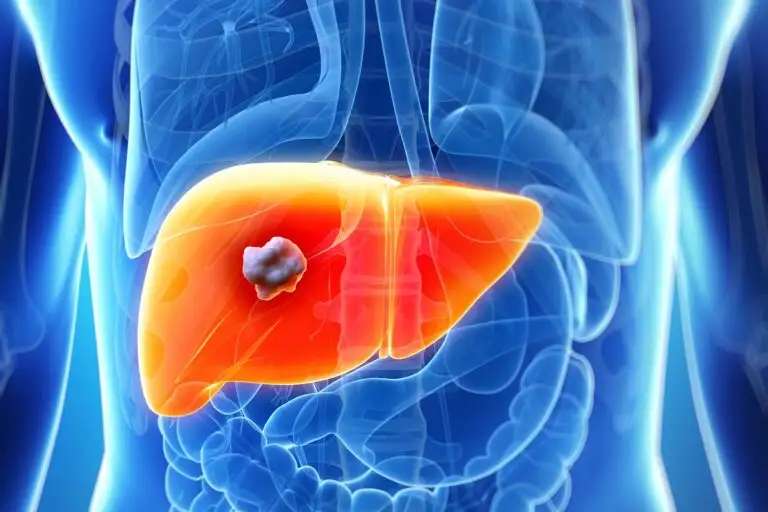
A 21-year-old boy was rushed to a hospital in Mumbai with a history of pain in the abdomen and fever for over 10 days. Blood test reports revealed that he had abnormal liver along with HIV-positive status. Further testing and CT scan showed a large liver abscess or collection of pus in the liver. Doctors at Wockhardt Hospitals, Mumbai Central said that the pus collection was due to a fungal infection. They conducted endoscopic drainage was conducted to remove the pus. As they have claimed, this was the first case of a fungal liver abscess drained in HIV-positive patients using endoscopic ultrasound in Maharashtra and Central India. Liver abscess can be fatal The boy, named Harshal Patil, was admitted to the hospital in the first week of July 2022. According to Dr. Shankar Zanwar, Consultant Gastroenterologist, the position and size of the abscess (7cm) were so huge that if it had not been treated early, it could have led to a rupture in the abdomen and resulted in a life-threatening situation. After analyzing the various possible ways to treat the patient and related complications, Dr. Zanwar and his team decided to conduct endoscopic drainage. He said, “Our initial plan was to drain the abscess in the liver by putting a needle and a drainage tube through the skin known as percutaneous drainage as this was a convenient way to operate on the patient. After reassessing the tract to drain this it was found that an unusually long puncture would have to be done, which was technically challenging, and the patient would have had a lot of discomfort post-procedure as it would lead to the inability to sleep or lie down on the right side since the tube would be hanging out for longer time. Thus, endoscopic drainage was explained to the patient and on his agreement, the team of doctors planned the procedure.” How liver abscess endoscopic drainage is performed Using an endoscopic ultra-sound method, the doctors accessed the pus collection through the stomach. Within three days of treatment, the fever and pain subsided and the patient became completely symptom-free. He was discharged five days after the procedure and was on antibiotics for 21 days. Repeat sonography scan at 1 month showed near complete resolution of the pus collection, Dr. Zanwar stated. According to the doctors, draining of liver abscess through endoscopic ultrasound is an unusual procedure and is performed by very few centers in India. They say simple aspiration of pus leaves a scope of incomplete clearance and prolonged time of recovery, while drainage of pus collection with drains helps early recovery. Treatment of various abdominal diseases such as large pus collection around the pancreas blocked bile ducts or pancreatic duct narrowing have now become easier and require no major surgery. Sonography vs endoscopic drainage A liver abscess (pus-filled cavity) need removal, usually it is done using direct sonography and can be painful for some patient as a tube is hanging out from the abdominal wall for a few days. Endoscopic drainage can be done for difficult to access pus collection through the abdominal wall which cannot be done using routine sonography. This avoids major surgery and offers very early patient recovery. Dr. Shankar ZanwarConsultant – GastroenterologistWockhardt Hospitals, Mumbai Central To book an appointment call: +918291101001 Source: https://www.thehealthsite.com/diseases-conditions/hiv-positive-patient-develops-liver-abscess-due-to-fungal-infection-endoscopic-drainage-saves-his-life-903872/
2D Echo Test, its Price, Types & Procedure for Healthy Heart
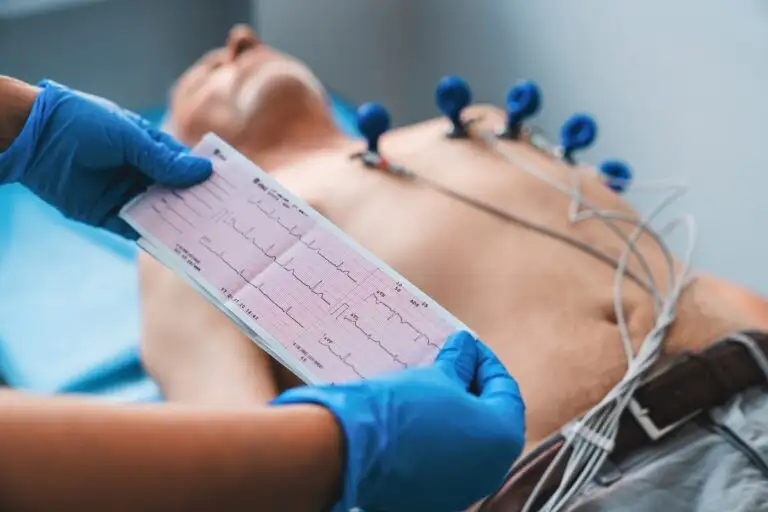
What is a 2D Echo Test? A 2D echocardiography test is as good as sonography of the heart and is a quite common cardiac investigative tool. It is a non-invasive, painless, and risk-free procedure for the heart. The procedure, uses high-frequency ultrasound waves, reflecting off various structures of the heart, to obtain one- and two-dimension real-time images of the beating heart. It assists, to visualize and assess heart muscles, valves, blood flow, four-chamber dilatation, and overall heart functioning capacity. Moreover, the test can be done on an outpatient basis in a clinic. It takes around 20 to 30 minutes for the test to be done. During the test, the patient lies down and a probe will be placed on the chest to create pictures of the heart which is viewed on a screen monitor. Thereafter printouts, the images are then given to the doctor and the patient as a report. The test offers, the cardiologist valuable information regarding the function and health of the heart. Generally, the cardiologist will advise the investigation in order to ascertain a diagnosis of an underlying heart condition when a patient has the symptoms such as breathlessness, chest pain, giddiness, and extreme fatigue. The 2D echo test can also be carried out in case a patient has a history of any cardiac condition such as heart blockages or previous heart attack. The 2D echocardiography investigation can determine whether there is heart failure, coronary artery disease, irregular heartbeats, valvular damage, cardiomyopathy, and infections in the heart. These circumstances, coincide with the symptomology that the patient presents to the cardiologist. There are various heart conditions, which can be derived from the result of the 2D echo which can be the cause of heart damage or failure: There are Three Basic “modes” used to Image The Heart: Types of 2D Echo Test: Precautions Before the 2D Echocardiography: How Does a 2D Echo Test Work? A non-invasive test called 2D echocardiogram, sometimes referred to as 2D echo, is used toevaluate the sections of your heart and analyse how it is working. Using sound vibrations, thistest creates pictures of the different parts of the heart. It helps in identifying signs of damages,obstructions, and blood flow rate. 2D Echocardiography Procedure The procedure of 2D Echo will be done in the following steps: When Do you Require a 2D Echo Test? The 2D Echo test is useful for the diagnosis and monitoring of variety of heart-related problems,including: Wockhardt Hospitals has a full-fledged noninvasive cardiac diagnostics department under one roof. The cardiologist and expert technicians are fully trained in performing the procedure and diagnosing various heart conditions. To understand more about the 2D echocardiography test, its price, its results, and at location near you. To book an appointment visit: https://www.wockhardthospitals.com/get-appointments/ FAQs on 2D Echo Test Q. What can you expect during the 2D echocardiography test? During a 2D echocardiography test, patients would be asked to lie down on a table and a technician places specific electrodes on the chest and applies gel to the transducer, and then moves it around the chest to obtain images of the heart’s structure. Q. What happens during the 2D echo test? During a 2D echocardiography test, a small device, called a transducer, is carefully placed on the chest that emits high-frequency sound waves that bounce off the heart’ structures. These images are displayed on a screen in real-time or recorded for reviewing later. Q. Is fasting required for a 2D echo test? The 2D echocardiography test is a completely non-invasive test that utilises a device to produce images of the heart’s structure, so patients don’t need to fast before a 2D echocardiography test. Q. What are the uses of the 2D echo test? A 2D echocardiography test is used for: Assessing cardiac blood flow, Identifying blood clots, Detecting anomalies in the heart’s walls and valves, Evaluating the effectiveness of cardiac treatments, such as surgeries or interventions, and Continuous monitoring of patients with chronic heart conditions. Q. What are the benefits of getting a 2D echo test? The benefits of a 2D echocardiography test include: Non-invasive procedure Safe for monitoring heart health during pregnancy Assess risk for surgery Stress test Assess congenital heart problems Monitor the cardiac health of children Additionally, a 2D echocardiography test is a cost-effective way to study the heart’s structure and function. Q. What is a good 2D echo test result? A 2D echo test reveals the presence or absence of any heart issues or atypical movements, or rhythms of the heart. A good 2D echo test result indicates the absence of any structural or functional issues of the heart that may cause the heart to function less efficiently and pump blood ineffectively. Q. What is the normal result of a 2D echo test? The result of a 2D echo test is expressed in terms of percentage and is an indicator of how well the heart functions in pumping blood. A normal 2D echo test result may fall within the range of 50-70%. Q. What is the 2d echo test price at Wockhardt Hospitals? The 2D Echo is a routine procedure that is cost-effective. At Wockhardt Hospital, 2D echotests cost between Rs 2500 and Rs 5000. The cost of an echocardiography test varies based onseveral factors, including the type of echocardiogram conducted and the cardiologist’s level ofexperience. Q. Can a 2D echo detect heart blockage? A 2D echo scan is unable to identify heart blockages. Doctors can see the heart’s internalstructures, such as the heart’s muscles, valves, and cardiac function, but they cannot detectblockages in the heart. It can only identify the function of the heart muscle, and the presence ofclogged arteries can be inferred if there is any weakening in the heart tissue. Q. Is 2D echo better than ECG? An ECHO is preferable to an ECG because it provides more precise data on how your heartvalves are functioning. In an echocardiogram, the heart is ultrasonically scanned to providemoving pictures that reveal the intricate anatomy and operation of the heart.
Menopausal hormone therapy: Gynaecologist answers FAQs you need to know

Menopause is often accompanied by hot flashes, lack of sex drive, and night sweats. To manage this, doctors recommend hormone replacement therapy – a treatment that introduces one to female hormones to replace the lack of estrogen in the body during menopause. There comes a time in a woman’s life when hormones start to decline. Estrogen starts dipping after a woman turns 45 and enters the peri-menopausal stage followed by menopause in the mid-50s. Menopause is often accompanied by hot flashes, lack of sex drive, and night sweats. To manage this, doctors recommend hormone replacement therapy – a treatment that introduces one to female hormones to replace the lack of estrogen in the body during menopause. However, interfering with the normal functioning of hormones could have serious consequences. Read on to know more about what an expert has to say about menopausal hormone therapy and its side effects. Dr. Gandhali Deorukhkar, Gynecologist at Wockhardt Hospitals, spoke about HRT and its possible negative effects. “The importance of women’s health and the quality of life after menopause is increasing. The most effective treatment for vasomotor symptoms (VMS) and genitourinary syndrome of menopause (GSM) is menopausal hormone therapy (MHT), which is also effective in preventing osteoporosis. MHT is an effective therapy that offers more advantages than disadvantages for women aged less than 60 years or who have had menopause for less than 10 years,” she said. “Points to consider prior to initiating MHT include checking the indications and contraindications of MHT, which requires history recording, physical examinations, and other tests. Because the symptoms of menopause are varied, customized tests should be conducted for each risk factor based on the basic examination conducted according to the life cycle and family history of a woman,” the expert added. The basic examination, which is a general examination conducted according to the life cycle, should identify lifestyles such as smoking and drinking habits; mental diseases such as depression; and family history for diseases such as Alzheimer’s disease, osteoporosis, diabetes, endometrial cancer, breast cancer, liver disease, thyroid disease, cardiovascular disease, and venous thromboembolism via history taking. In addition, the basic examination should include a physical examination for height, weight, and blood pressure as well as the pelvis, breast, and thyroid. Blood tests include tests for liver function, kidney function, anemia, and fasting blood sugar as well as lipid examination, followed by mammography, bone mineral density (BMD) test, pelvic ultrasound, and Pap smear screening. In the case of premature ovarian insufficiency (POI), MHT can be used at least until the mean age of menopause regardless of symptoms. Dr. Gandhali DeorukhkarConsultant – GynecologistWockhardt Hospitals, Mumbai Central To book an appointment call: +918291101001 Source: https://www.timesnownews.com/health/menopausal-hormone-therapy-gynaecologist-answers-faqs-you-need-to-know-article-93731670
Healthy Detox Drinks for Diabetes to Maintain Blood Sugar Levels

While proper healthy management is a must to manage diabetes. Keeping in mind, we have few healthy detox drinks that you should definitely add in your diabetes-friendly diet now. Diabetes has been one of the major health concerns across the world. It is a major lifestyle disease affecting half the population of the world. While proper health management is a must to manage diabetes. Keeping in mind, we have a few healthy detox drinks that you should definitely add to your diet. The best part is it’s all-natural and easy to make at home. So, here are 5 nutritious detox diabetic drinks to reduce high blood sugar levels. 5 Homemade Drinks for Diabetics Drinks to Avoid in Diabetes Sugary beverages should always be avoided wherever feasible. They can contribute significantly to your daily suggested calorie intake and elevate your blood sugar levels. Sugar-filled beverages don’t really offer anything nutritious to your diet. Let’s get to know some of them. Treatment and Surgery For Diabetes Insulin injections or the use of an insulin pump, regular blood sugar monitoring, and carb counting are all part of the treatment for type 1 diabetes. Islet cell or pancreatic transplantation may be the option for certain individuals with type 1 diabetes. Changes in lifestyle, blood sugar monitoring, oral medications, insulin, or both are the mainstays of treatment for type 2 diabetes. Monitoring Blood Glucose: Regularly check blood sugar levels to track and manage diabetes effectively. You may take and record your blood sugar readings up to 4 times a day or more frequently if you’re on an insulin supplement, depending on your treatment plan. Insulin Therapy: To improve blood sugar regulation, certain people may need to receive insulin injections. Insulin is a necessary blood sugar management component for patients with type 1 diabetes. Insulin treatment is also required for a large number of patients with type 2 diabetes or birth defects. Medication Management: Diabetic patients often require oral medications and/or insulin injections to regulate blood sugar levels. Certain diabetic medications stimulate your pancreas to produce more insulin. Some medications stop your liver from producing/releasing glucose, which reduces the insulin required to transfer sugar into your cells. Transplantation: An alternative for certain Type 1 diabetics may be a pancreas transplant. Insulin-producing cells are transplanted during the islet cell transplant process to help with blood sugar management. Bariatric Surgery: For obese individuals with diabetes, weight loss surgeries like gastric bypass may improve insulin sensitivity. Individuals with gastric bypass surgery have had significant changes in their blood sugar levels. Treatment for Gestational Diabetes: Monitoring your blood sugar levels may be part of your treatment plan for gestational diabetes, in addition to following a nutritious diet and engaging in regular exercise. You could occasionally additionally take insulin or oral medications. Conclusion Adopting healthy detox drinks can be a proactive approach to regulate and maintain stable blood sugar levels and promote overall well-being. These beverages, coupled with a balanced diet and regular exercise, contribute to a holistic approach to health. However, it’s crucial to consult healthcare professionals before making significant dietary changes ensuring compatibility with individual health conditions. Wockhardt Hospitals encourages a mindful approach to nutrition, empowering individuals to make informed choices for sustained blood sugar control and enhanced vitality in the journey towards diabetes wellness. Dr. Jinendra JainConsultant PhysicianWockhardt Hospitals, Mira Road To book an appointment call: +918108101104 Source: https://www.india.com/health/diabetes-5-healthy-detox-drink-recipes-to-maintain-blood-sugar-levels-5587187/ FAQs on Health Drink for Diabetes Q. Can diabetes be cured? Diabetes cannot be cured, but it can be effectively managed through lifestyle modifications, medication, and ongoing medical supervision to control blood sugar levels and minimise complications. It’s a lifelong condition that requires consistent attention to maintain optimal health. Q. How to get sugar out of your system immediately? The easiest way to get sugar out of your system and bring blood sugar levels back to normal is to drink a lot of water. Exercising is another way to do it. Additionally, taking fast-acting insulin also lowers blood sugar levels fast. Q. How to detox from sugar? Here are a few ways to sugar detox your body: Replace sugar with healthier natural alternatives Avoid sugary drinks Avoid sugary desserts Consume full-fat foods Avoid processed foods Include more fibre and protein in your diet Stay hydrated Manage stress Q. Is lemon and cucumber water good for diabetes? While lemon and cucumber water may not be a super drink people expect, it still provides ample health benefits, like getting Vitamin B, C, & K along with copper, phosphorus, potassium, and magnesium. Q. What are homemade sugar detox drinks? Homemade sugar detox drinks include options like lemon water with mint, cucumber and ginger-infused water, Tulsi Water, Neem water and herbal teas. These beverages can aid in reducing sugar intake, promoting hydration, and supporting overall health. Q. What are homemade drinks for diabetes to lower blood sugar? Homemade drinks to help lower blood sugar in diabetes include cinnamon-infused water, methi water, bitter gourd juice and green tea. These beverages may have potential benefits in managing blood sugar levels, but it’s essential to consult with a healthcare professional for personalised advice. Q. What is the safest drink for a diabetic? Water is the safest drink for a diabetic, as it has no added sugars or carbohydrates, helping to maintain hydration without impacting blood sugar levels. Additionally, unsweetened herbal teas or black coffee in moderation can be safe options for those with diabetes. Q. How much water should a diabetic drink daily? Water consumption helps your body eliminate extra glucose in addition to preventing dehydration. Diabetics are generally advised to drink at least 8 glasses of water per day to stay hydrated, and support overall health, but individual needs may vary.
Swine Flu on the rise: How to take care of you and your family?

Region’s Swine Flu cases continue to rise with several cases being reported every day. Deaths due to flu have been reported and severe pneumonia has also increased. Dr. Swaroop Verma, Consultant- Internal Medicine and Critical Care, Wockhardt Hospitals, Nagpur says that this is the time when people need to be very careful in preventing the disease and keeping a close watch for the symptoms. “The Swine Flu cases are increasing and people need to be careful. In case of any symptoms, a close watch is needed”, he says. Common Symptoms of Swine Flu Include: Swine Flu is contagious, and it spreads in the same way as the seasonal flu. When people who have it cough or sneeze, they spray tiny drops of the virus into the air. Who is More Likely to be at Risk of Swine Flu? Things you Can Do to Stay Healthy: Also, keep a close watch for the symptoms. In case you see them, contact a doctor. Immediate H1N1 test, x-rays, and CT scans might require for your patients once symptoms are confirmed. Dr. Swaroop Verma, Consultant- Internal Medicine and Critical Care, Wockhardt Hospitals, Nagpur To book an appointment call: +918605604444 Source: https://thelivenagpur.com/2022/08/13/swine-flu-on-rise-how-to-take-care-of-you-and-your-family/







